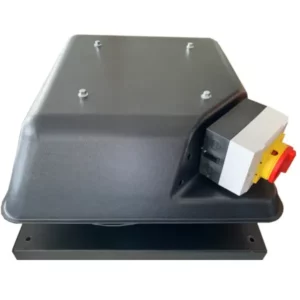Kitchen axial fans are not typically suitable for ventilation in hazardous environments due to several factors:
- Explosion Risk: Hazardous environments, such as those containing flammable gases, vapors, or combustible dust, pose a significant risk of explosion. Kitchen axial fans are not designed to be explosion-proof or intrinsically safe, meaning they may not prevent ignition sources from coming into contact with flammable substances, potentially leading to explosions.
- Material Compatibility: Kitchen axial fans are often constructed from standard materials such as steel or aluminum, which may not be compatible with the corrosive or reactive substances present in hazardous environments. Exposure to chemicals or aggressive agents could lead to degradation, structural weakening, or failure of the fan components.
- Sealing Requirements: Hazardous environments typically require ventilation equipment to have specialized seals and enclosures to prevent the escape of hazardous substances and to ensure electrical safety. Kitchen axial fans may lack the necessary seals and containment features to meet these requirements, increasing the risk of leaks or contamination.
- Electrical Safety: In hazardous environments, electrical equipment must be designed to prevent the generation of sparks or arcs that could ignite flammable atmospheres. Kitchen axial fans may not incorporate intrinsically safe electrical components or meet the stringent safety standards required for use in hazardous locations.
- Certification and Compliance: Ventilation equipment used in hazardous environments must meet specific regulatory standards and certifications, such as those set forth by organizations like UL (Underwriters Laboratories) or ATEX (Atmosphères Explosibles). Kitchen axial fans may not be certified for use in hazardous locations, making them unsuitable for such applications.
Instead of kitchen axial fans, specialized ventilation equipment designed for hazardous environments, such as explosion-proof axial fans or centrifugal fans, should be used. These fans are specifically engineered to meet the safety requirements of hazardous locations, with features such as spark-resistant construction, sealed enclosures, and compliance with relevant standards and certifications. Using the appropriate ventilation equipment helps mitigate the risk of accidents, protect personnel and property, and ensure regulatory compliance in hazardous environments.
